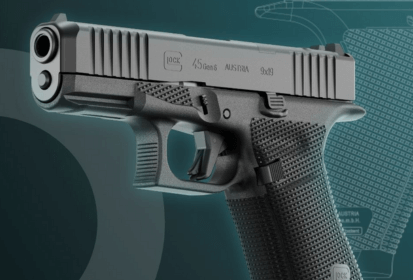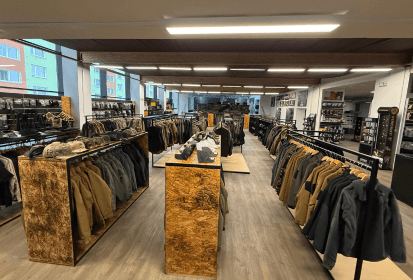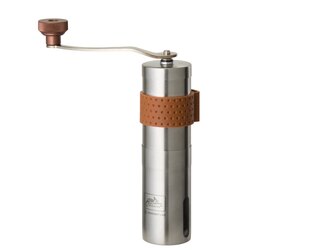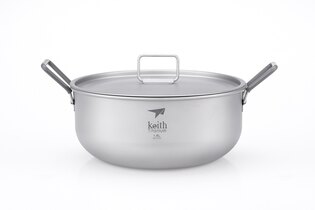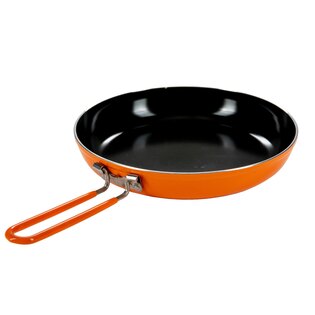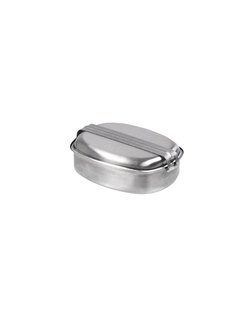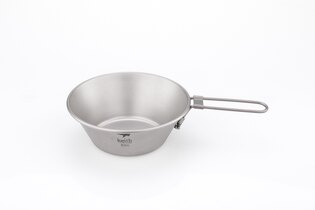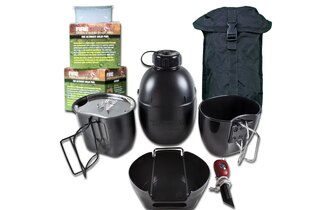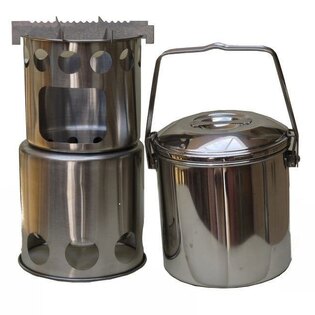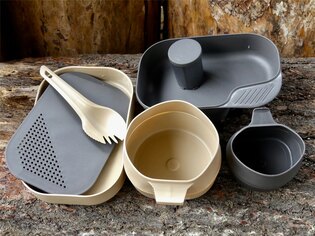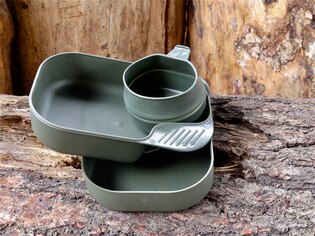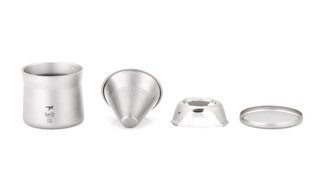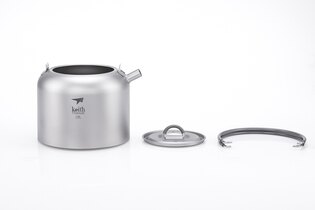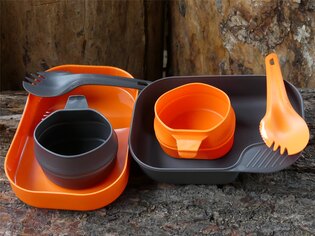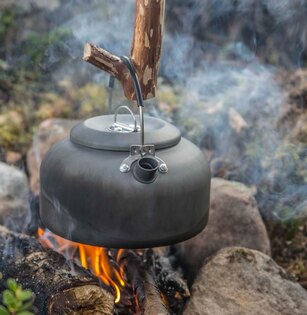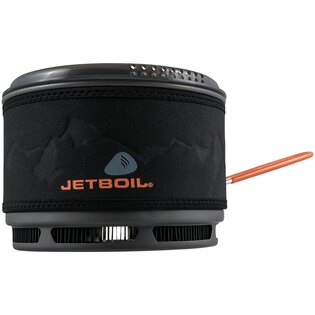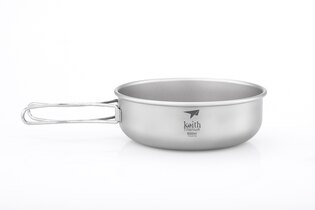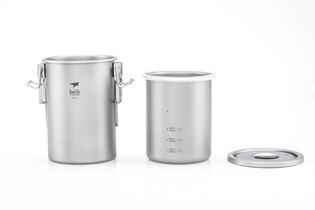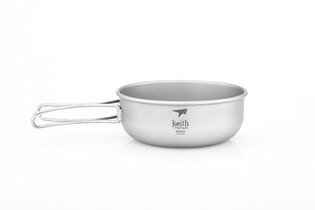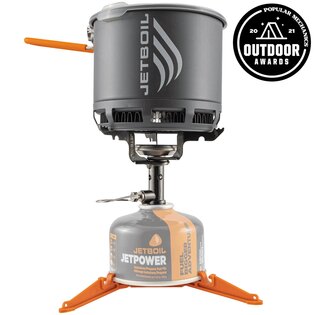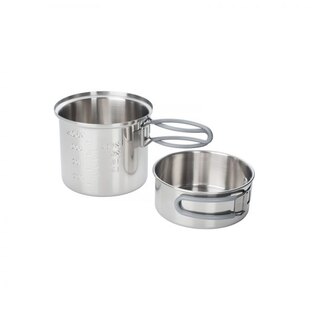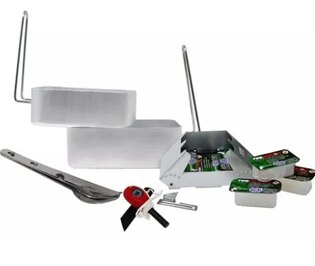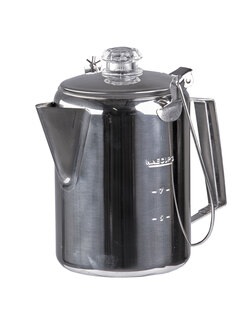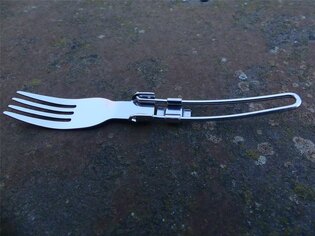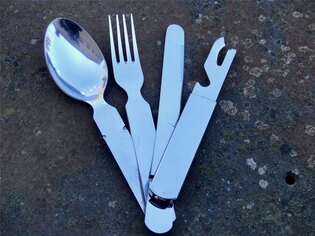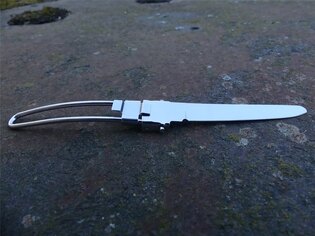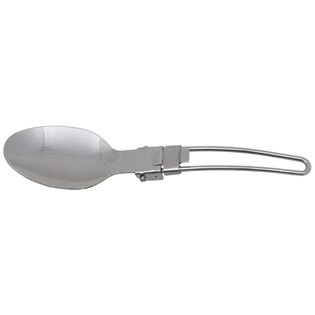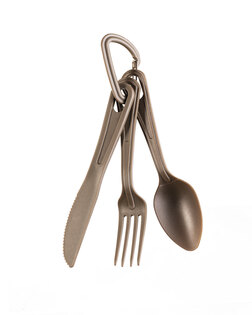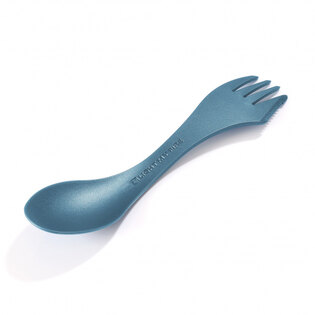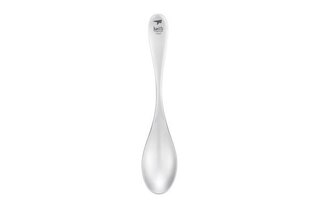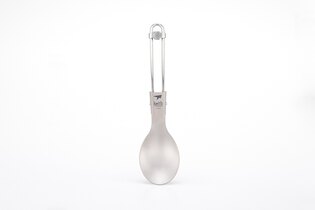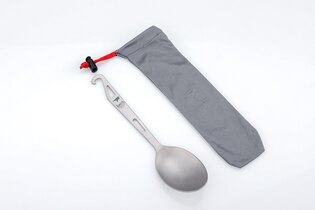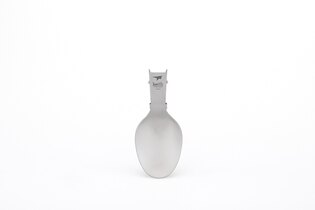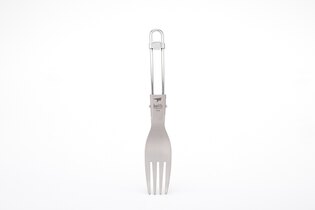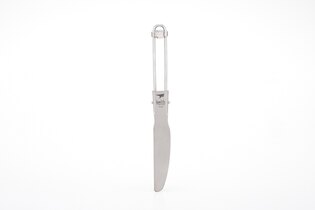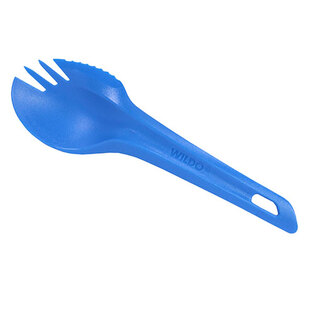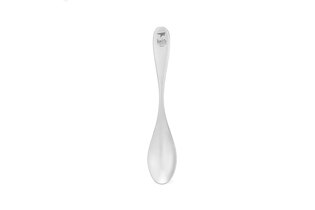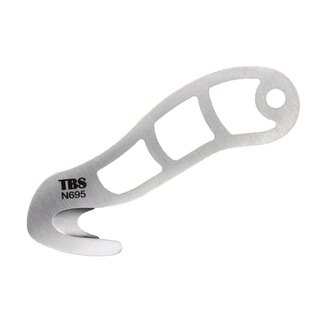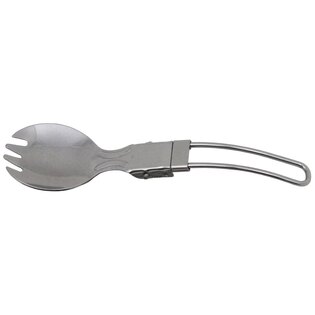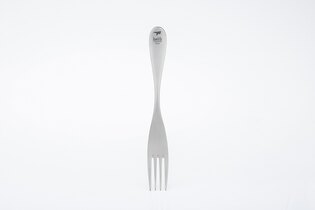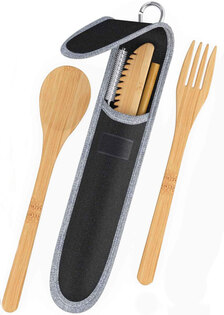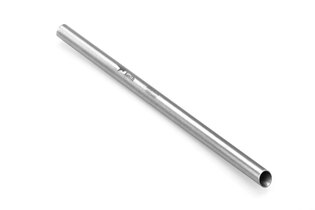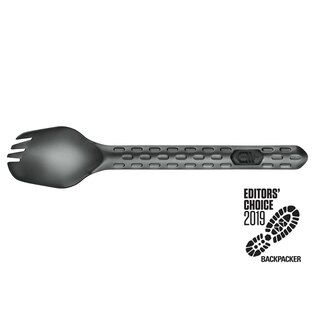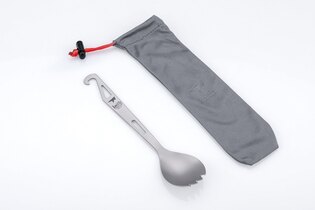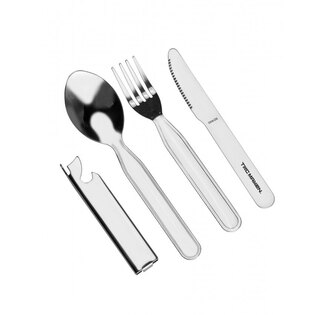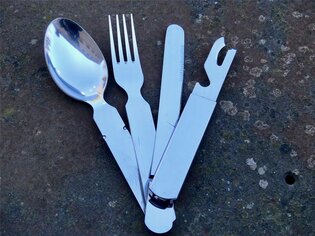How to Choose Outdoor Cookware and Dining Gear for the Wild
You won’t be sipping soup from fine china or coffee from a delicate mug in the wilderness. Outdoor cookware and dining essentials need to be lightweight, compact, durable, and easy to clean—whether it’s a mess tin, collapsible cup, spork, camping stove, or water filter. A well-chosen kit will save space in your pack, reduce meal-prep effort, and make life easier in the field. This guide offers practical advice for choosing outdoor dining gear based on your activity, environment, and travel style.
Out in nature, cooking and dining gear isn't about the comforts of home—it's about function in real-world conditions. When you need to cook, eat, and pack up again in minutes, every gram, material, and packing method counts. Your setup should be compact, tough, ideally multifunctional—and above all, thoughtfully put together. This article will help you assemble a reliable kit, whether you’re headed deep into the wild or just to a campground.
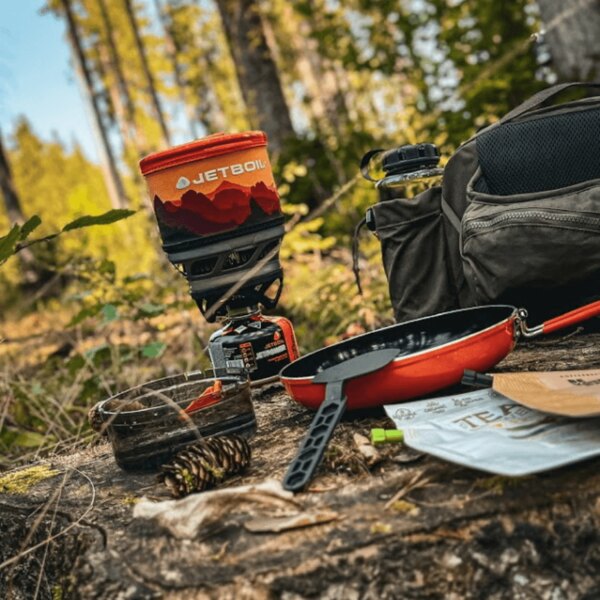
Compact Jetboil stove system with accessories—ideal for fast and efficient outdoor meal prep.
Dining Gear Based on Outdoor Activity Style
Different outdoor activities require different cooking and dining setups. If you're car camping, you can afford to pack a full kitchen. But once you're hiking through rugged terrain with everything on your back, every gram and every piece of gear matters. Here’s a breakdown of different scenarios—and what to focus on when choosing your outdoor dining gear.
🔹 Day Hikes and Lightweight Travel
On short hikes, there's usually no need to cook. You’ll likely get by with pre-prepared cold meals and a hot drink in a thermos. If you expect access to water sources or cafés along the way, you can streamline your setup even further.
🎒 Gear for a Light Expedition
- Collapsible Cup – lightweight, compact, easy to clean
- Spork M-Tac – replaces a full set of cutlery
- Big Frig Thermo Cup – maintains temperature on the go
- Water Bottle – robust, reusable
You can manage with the bare minimum – the goal is quick use and minimal weight.
🧭 Key Considerations:
- No need to carry a stove or fuel.
- Minimal gear required.
- Fast access without unpacking.
- Great for a light EDC (Everyday Carry) setup—"everything in one pocket."
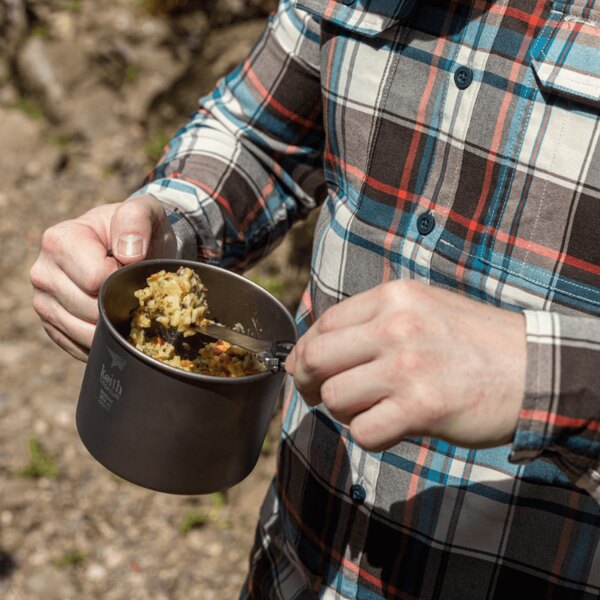
Lightweight and durable Keith titanium cookware—perfect for treks and multi-day crossings.
🔹 Multi-Day Treks and Off-Grid Trips
For extended trips, cold food and a single mug won’t cut it. Your gear needs to be reliable, lightweight, and as versatile as possible—capable of preparing several meals a day without weighing you down. Planning for hydration is crucial: if you won’t have access to springs or wells, you’ll need a filter or enough bottles and water reservoirs.
🏕️ Gear for Multi-day Transition
- Spork M-Tac – multifunctional tool that replaces cutlery
- Folding Mug – lightweight, compact, and easy to clean
- Titanium Pot Keith 1.8 l – ultralight, durable, and suitable for cooking and serving
- Jetboil MiniMo Stove – fast, efficient, and compact system
- Filter Tactical BeFree Katadyn – reliable water filtration in the field
- Big Frig Bottle – robust water container with good insulation
Every extra gram counts – choose reliable and lightweight gear that can handle multiple functions at once.
🧭 Key Considerations:
- You’ll need a way to prepare hot meals.
- Weight and pack size are critical.
- Gear must perform reliably, even in poor conditions.
- Every item should serve more than one purpose.
🔹 Bushcraft and Wilderness Survival
Bushcraft flips the priorities—weight, size, and complexity take a back seat to durability and simplicity. Cooking over an open fire, one versatile pot or mug, multi-use tools, and no-frills storage are the norm. Your kit must handle non-ideal conditions and remain functional no matter what.
🌲 Equipment for Bushcraft and Survival
- Titanium Cup Keith 1.8 l – extremely durable, suitable for fire
- Spork M-Tac – compact multifunctional cutlery
- Leatherman Multitool – versatile tool, not just for food
- Exotac Lighter – reliable fire ignition in any weather
- Cooking Stand/Base – simple way to hang a pot above a fire
- Rigad Tin Mug – lightweight, durable, and iconic
Everything must be reliable and compatible with fire – you leave the gas at home here.
🧭 Key Considerations:
- No access to modern amenities or tech.
- Cooking is done over open flame—gear must be fireproof.
- Each piece must be reliable and multipurpose.
- Extreme minimalism and direct contact with nature.
- Even the simplest tools serve multiple roles—no extras, no waste.
🔹 Car Camping and Vanlife
When you’ve got a car or camper, weight and volume are no longer limiting factors. You can enjoy the comfort of a home kitchen—larger pots, full-size stoves, and even coolers. Gear should be practical, stable, and easy to use and clean.
🍳 Camping Equipment
- Pinguin Quadri X Cookware Set – a four-piece set made of anodized aluminum for full-fledged cooking
- Meva Double Burner Stove – ideal for stable cooking at the campsite
- M-Tac Cooler Box – keeps food fresh even in the heat
- Classic Cutlery and Sets – for comfortable dining without compromise
- Plates and Bowls for Multiple People – durable, easy to clean
The comfort and facilities of the car allow you to bring part of your home kitchen into the field – even with a fridge and a pan.
🧭 Key Considerations:
- No need for compact or ultralight gear.
- Cook for multiple people at once.
- Use of multi-burner or electric stoves is possible.
- Dining comfort is a priority over minimalism.
- Accessories like coolers, frying pans, and regular cutlery are welcome.
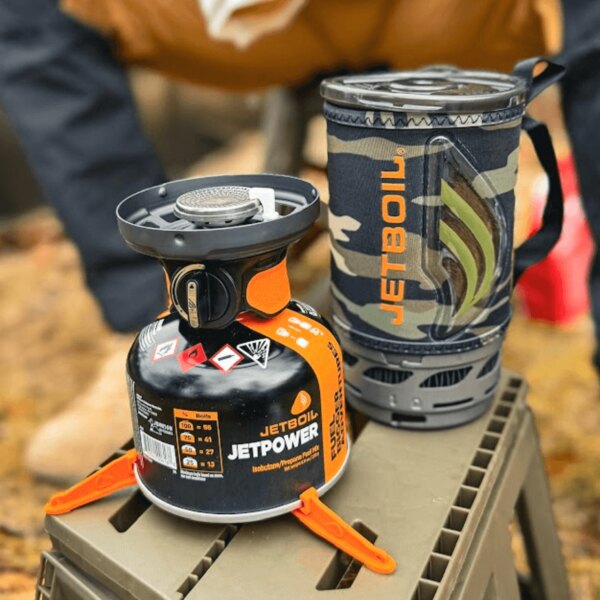
Reliable Jetboil system with integrated pot—built for efficient outdoor cooking in any environment.
Cooking Outdoors: How to Choose Field-Ready Cookware
Simplicity is key in the outdoors—the fewer items, the better. Choosing a pot you can both cook and eat from saves weight and space. The classic go-to is a mess tin or cup made from lightweight, durable material—ideally titanium, which is extremely strong, light, and suitable for open-fire cooking.
If you’re heading to a campsite or other base where weight isn’t an issue, you can expand your setup with pots, pans, lids, bowls, or separate plates.
Consider whether a single, all-purpose item is enough for you—or if you’d prefer a modular, nestable set that fits neatly together and saves room in your pack.
Outdoor Utensils and Tools: What to Pack for Your Adventure
The right utensils can take up minimal space while making a big difference in your comfort outdoors. Standard cutlery—knife, fork, spoon—works, but it takes up room and is easy to lose. A more efficient solution is foldable outdoor cutlery or sporks—lightweight tools that combine multiple functions in one piece, such as a spoon, fork, and sometimes even a knife or bottle opener.
Another useful item is a multitool. Besides a blade, it may include screwdrivers, a corkscrew, a saw, or a can opener. Unlike basic pocket knives, a multitool can handle much more than just spreading pâté on bread. It saves space and proves useful beyond the kitchen—whether for gear repairs or fire-starting prep.
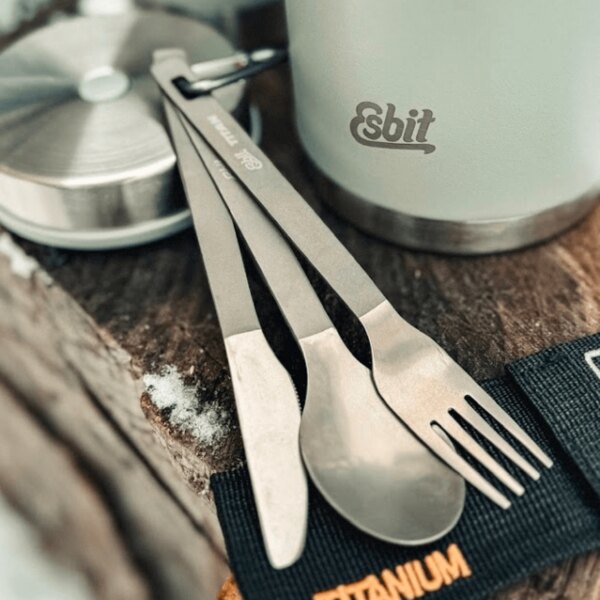
Esbit titanium cutlery set—lightweight, durable, and built for treks and extended expeditions. Includes spoon, knife, and fork for demanding outdoor users.
Bottles, Thermoses, and Water Filtration in the Field
Staying hydrated isn't optional—it's fundamental. Whether you carry water in a bottle, tea in a thermos, or a hydration bladder depends on your route, the weather, and water source availability.
On longer trips away from civilization, plan your route to pass by springs or natural water sources. If those aren’t accessible, bring a water filter or purification tablets—ideally with proven performance in the field.
TIP: Consider a combination: a lightweight bottle for quick access, a thermos for hot drinks, and a filter in case you run out of clean water.
Stoves and Heat Sources in the Outdoors
The right stove depends on fuel availability, weight, and compatibility with your cookware. Gas stoves are the most commonly used, offering a great balance of performance and ease of use. Alternatives include alcohol, gasoline, or wood-burning stoves—better suited for specific conditions or extended expeditions.
A unique solution is self-heating meal pouches (such as those from Tactical Foodpack), which use a chemical reaction to generate heat—no flame required. These are ideal for emergencies or when discretion is important.
If you’re cooking over an open fire, you’ll need a sturdy pot and ideally a firestarter or ferro rod. Regardless of your heat source, ensure your stove and cookware are compatible—the stove should always match your chosen pot or pan.
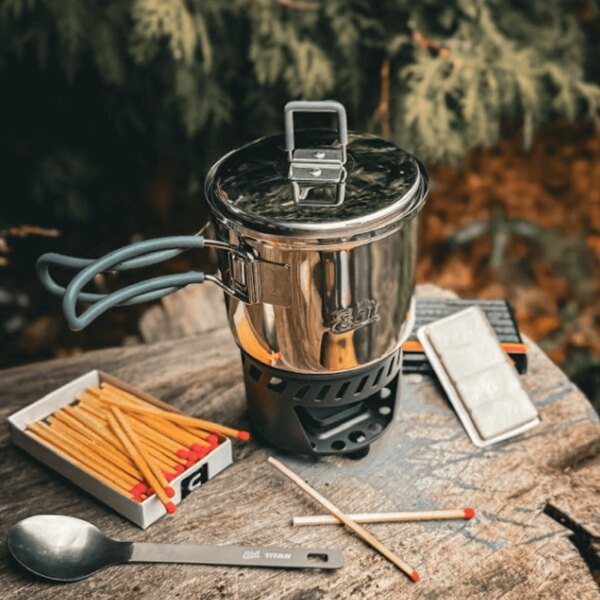
Compact Esbit stove with titanium pot—perfect for heating meals in the wild. Lightweight, packable, and easy to use in the field.
Cleaning and Maintaining Your Cookware
Keeping your cookware usable doesn’t have to mean extra burden. For longer trips, biodegradable cleaning products are useful, but for ultralight travel, a stream and a bit of moss can do the trick.
When water is scarce and you don’t want to dirty the rest of your gear, pack a waterproof stuff sack for dirty cookware. It folds flat, takes up little room, and keeps your backpack clean until you can wash up properly.
TIP: Always clean your gear—even if you only used it “dry.” Residue from fats or proteins can cause issues in just a few hours.
🎒 Field-Tested Tips: What Really Works Outdoors
- Minimalism vs. Comfort: For backpacking, a single cup and a spork often do the trick. But when car camping, you’ll appreciate the extra comfort of a spatula or even a small spice kit.
- Smart Investments: A reliable stove, a sharp all-purpose knife, and a quality insulated thermos are worth every penny.
- Where You Can Cut Back: You don’t need a full set of cutlery or multiple bowls—one well-chosen titanium pot can serve multiple purposes.
- Test at Home First: Set up your stove or check for leaks in your thermos before you’re out in the rain—your kitchen counter is the best testing ground.
- Common Rookie Mistakes: Overpacking, forgetting a firestarter, bringing incompatible gear, and having no plan for cleaning your dishes.
🎒 More Gear from Rigad’s Selection
M-Tac® Pocket Utensil 5-in-1
A durable stainless steel multitool combining spoon, fork, knife, corkscrew, and bottle opener. Compact and ideal for minimalist travel setups.
Rigad® Enamel Mug / 250 ml
A classic enamel mug for your morning brew by the fire. Lightweight, durable, and branded with style.
Big Frig® 30 oz Thermal Tumbler
Large-capacity insulated mug made of double-walled stainless steel. Keeps your drinks hot or cold for hours.
Pentagon® Olaf Camping Tool
All-in-one folding utensil with knife, spoon, fork, and opener—compact and practical for every outdoor cook.
Katadyn® Combi Plus Portable Filter
Lightweight and high-performance water filter with up to 2 L/min flow rate. Perfect for longer treks and wilderness survival.
Conclusion: Outdoor Kitchen Essentials at a Glance
Choose your outdoor cooking gear based on the length and nature of your trip. Packing for a two-day mountain trek is very different from preparing for a relaxed weekend at a campsite with your car nearby. Pay close attention not only to weight, but also to packability, functionality, and the quality of the materials—these details often determine whether your gear supports you or slows you down.
Before you head out, double-check your gear—missing a stove, compatible pot, or water filter could cut your trip short. And most importantly: test your kit at home. The more field experience you have, the better you’ll know what you really need—and what can stay behind.
Readers are further interested
